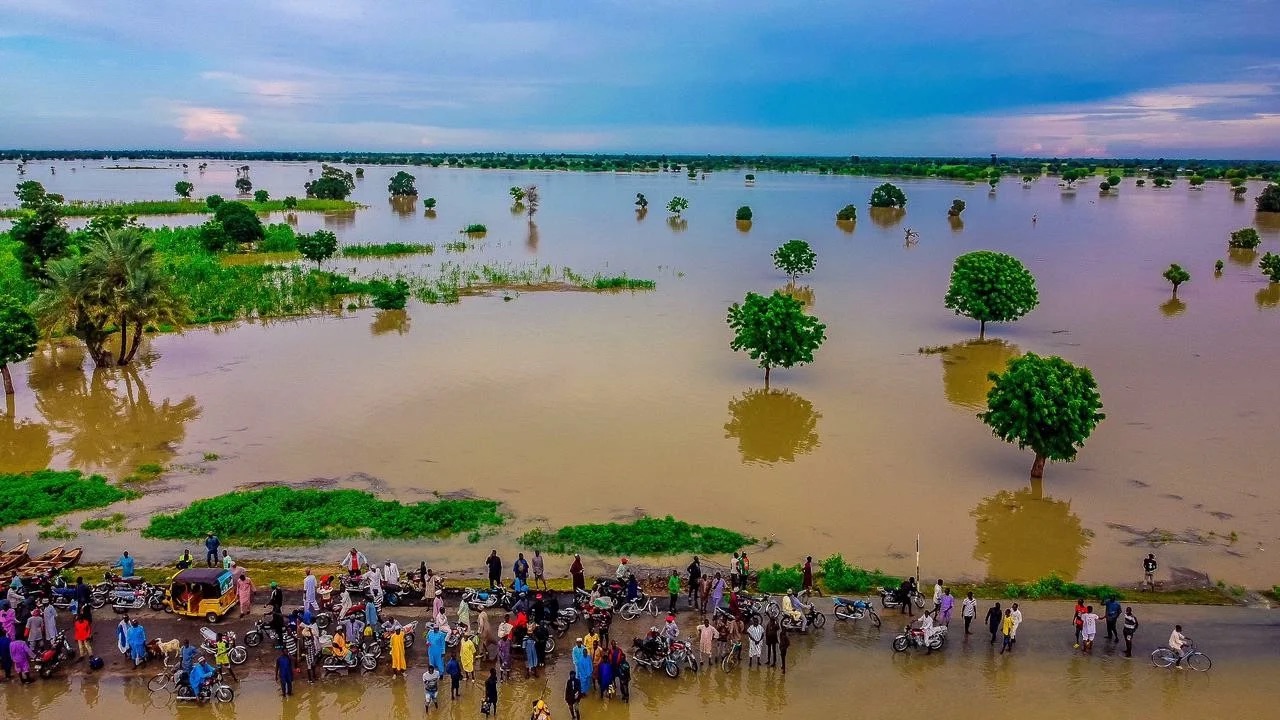Featured Image: Flood in Jigawa, Nigeria. Source: dailypost.ng
Africa today contributes less than 4% to global emissions but is the most vulnerable continent to climate crisis. As communications professionals working on issues around Africa, an important mandate we have is to use our resources and skills to better communicate about Africa, accelerating her development and resilience in all areas. Talking about the climate crisis is not restricted to scientists (or the activists at UNGA). There is a need for every organization everywhere (especially in Africa) to talk about the climate crisis. And in those organizations, you as the communications professional should take the lead.
Communicating about the climate crisis in Africa has a number of benefits. First, it helps to build climate resilience; we can’t run away from climate change, but we can fortify ourselves to become better adaptable. Climate communication in Africa accelerates access to climate finance which is a very important element in building climate resilience. Climate comms is also a great way to talk about climate change in the context of your locality as well as connect with other communities fostering collaboration across borders in a way that builds again, more adaptability.
Now, let’s talk about how you can own the climate communication in your organization. As with every communication that has to do with citizen behaviour, mindset shifts, and taking action to make changes, climate communication IS hard work. This is largely due to the daunting task of striking a balance between the scientific and economic aspects of climate change, and connecting that to its current effect on people’s lived experience. Doing the following can help you better communicate about the climate crisis (in Africa).
1. Audience
Define and categorize your audience: This is a super important first step in climate communications. In the climate sphere, there are different audience categories; business and economic focused audiences, civil society, policy makers and the person on the street. In defining your audience, think about their needs, perspectives, and what you want them to benefit from that communication piece (be it a social media post or a 500 word article on climate finance in East Africa). Defining and categorizing your audience is paramount to having your audience find your content useful and possibly move them to action. Also take into consideration the literacy level of your audience and try to simplify your communications based on that.
2. Content
In our digital world today, content is king. For climate related content, it is best to create different content types based on each audience segment. Your content should also be versatile, at the core of climate change is a lot of scientific jargon that must be simplified if you want others to truly make sense of it. Be as creative as you can with your climate content; use pictures, videos, infographics as well as audio explanations to (drive it home). Also avoid using cliché terms and visuals, make your content stand out whilst being consistent with brand image
3. Message style.
Be data driven: Nigeria, in West Africa, is currently experiencing the most devastating flooding in the last 10 years with about 33 out of 36 states are affected. Still, a large number of Africans don’t believe climate change has negative effects or they think its effects are far away in the distant future. The truth is, these effects can already be seen (and experienced) even now, so it is important that your climate comms carries relevant data. You should strive to have verified data on climate impact in all of your communications irrespective of the audience. Don’t think because a particular communication is for rural community leaders, it should be devoid of all necessary data, no. Include the data but simplify them.
Be inspiring: more than talking about the threats posed by climate change, talk about the solutions (both those already implemented and those that can be implemented). Take note of your community, find out what climate solutions are taking place and talk about them. Doing this will not only amplify the work that is being done but will provide data for further work and of course foster collaboration. Talk about solutions and inspire people by the positive result of being climate resilient.
Finally, be proactive. Talk about climate related gatherings, highlight and share them with your network. In the fight for sustainability, we must all work hand in hand to achieve the best results. COP27 is around the corner, this is a good place to start!

